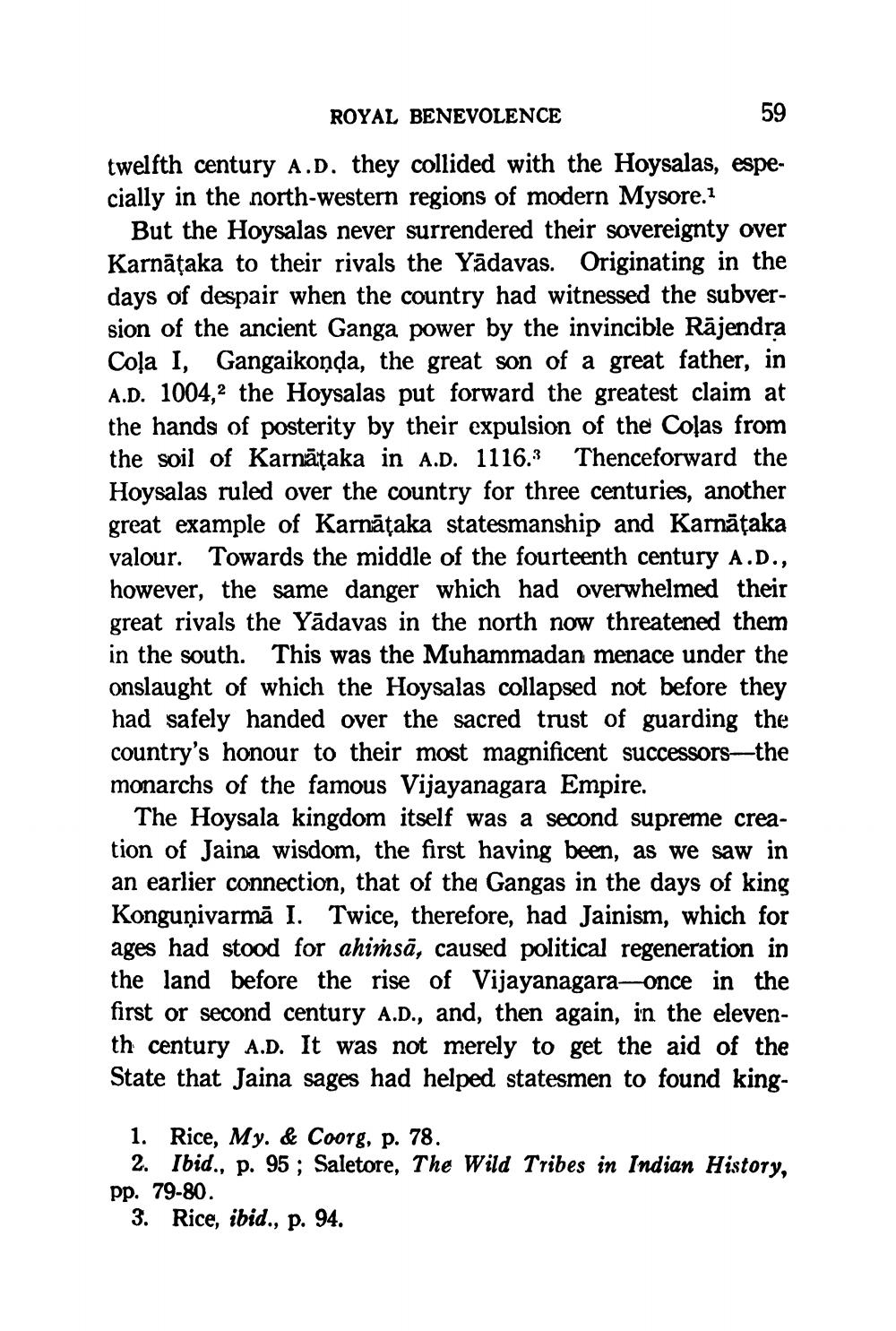________________
ROYAL BENEVOLENCE
59
twelfth century A.D. they collided with the Hoysalas, especially in the north-western regions of modern Mysore.
But the Hoysalas never surrendered their sovereignty over Karnāțaka to their rivals the Yādavas. Originating in the days of despair when the country had witnessed the subversion of the ancient Ganga power by the invincible Rājendra Coļa I, Gangaikonda, the great son of a great father, in A.D. 1004,2 the Hoysalas put forward the greatest claim at the hands of posterity by their expulsion of the Coļas from the soil of Karnāțaka in A.D. 1116. Thenceforward the Hoysalas ruled over the country for three centuries, another great example of Karnātaka statesmanship and Karnāțaka valour. Towards the middle of the fourteenth century A.D., however, the same danger which had overwhelmed their great rivals the Yādavas in the north now threatened them in the south. This was the Muhammadan menace under the onslaught of which the Hoysalas collapsed not before they had safely handed over the sacred trust of guarding the country's honour to their most magnificent successors—the monarchs of the famous Vijayanagara Empire.
The Hoysala kingdom itself was a second supreme creation of Jaina wisdom, the first having been, as we saw in an earlier connection, that of the Gangas in the days of king Konguņivarmā I. Twice, therefore, had Jainism, which for ages had stood for ahimsā, caused political regeneration in the land before the rise of Vijayanagara-once in the first or second century A.D., and, then again, in the eleventh century A.D. It was not merely to get the aid of the State that Jaina sages had helped statesmen to found king
1. Rice, My. & Coorg, p. 78.
2. Ibid., p. 95; Saletore, The Wild Tribes in Indian History, pp. 79-80.
3. Rice, ibid., p. 94.




